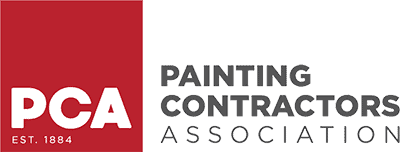When painting cabinets, achieving a professional and durable finish requires careful planning and execution. Whether tackling a DIY project or hiring professionals, understanding the dos and don’ts of cabinet painting is essential for a successful outcome.
In this blog, we’ll cover every step from preparation to finishing touches, ensuring your cabinet painting project is a resounding success.
Dos of Cabinet Painting
1. Do Properly Clean and Prep Cabinets
Tip: Clean cabinets with a degreaser to remove built-up grime and grease. Sand the surfaces to create a smooth, paint-ready surface.
Proper cleaning and preparation are the foundation of a successful cabinet painting project. Use a degreaser to remove accumulated grime and grease. After cleaning, sand the surfaces to create a smooth and paint-ready foundation. This ensures the paint adheres well and provides a long-lasting finish.
2. Do Use High-Quality Primer
Tip: Apply a high-quality primer to create a solid base for paint. Choose a primer that is suitable for the cabinet material.
Investing in a high-quality primer is crucial for achieving a professional finish. A good primer creates a solid base for the paint, improving adhesion and durability. Choose a primer suitable for your cabinets’ specific material, whether wood, laminate, or another surface.
3. Do Sand Between Coats
Tip: Sanding between coats helps achieve a smooth and even finish. Use fine-grit sandpaper to avoid damaging the painted surface.
Sanding between coats is critical for achieving a smooth and even finish. This helps remove imperfections, ensuring the subsequent coats adhere well. Use fine-grit sandpaper to avoid damaging the painted surface and create a polished appearance.
4. Do Consider Professional Help
Tip: Consider hiring professionals for complex cabinet painting projects or if you need more experience. They have the expertise and tools to ensure a flawless finish.
Consider hiring professionals if you need clarification on your painting skills or if your cabinets have intricate details. Experienced painters have the expertise and tools to handle complex projects, ensuring a flawless and professional finish. This is especially important for high-visibility areas like the kitchen.
5. Do Seal Cabinets for Durability
Tip: Apply a clear topcoat or sealant to protect the painted cabinets from wear, stains, and moisture.
To enhance the durability of your painted cabinets, consider applying a clear topcoat or sealant. This protective layer guards against wear, stains, and moisture, extending the paint job’s life. Choose a sealant that is compatible with the type of paint you used.
Don’ts of Cabinet Painting
1. Don’t Skip the Cleaning Step
Tip: Proper cleaning is essential; skipping this step can result in poor paint adhesion and an uneven finish.
Skipping the cleaning step is a common mistake that can lead to poor paint adhesion and an uneven finish. Grease and grime on cabinets can prevent paint from sticking, compromising the overall durability of the project. Take the time to thoroughly clean and prep the surfaces.
2. Don’t Neglect Proper Ventilation
Tip: Ensure proper ventilation in your workspace to avoid inhaling fumes from cleaning agents, primers, and paints.
Neglecting proper ventilation can result in exposure to harmful fumes from cleaning agents, primers, and paints. Work in a well-ventilated area or use fans and open windows to minimize exposure. If working indoors, consider using a respirator to protect yourself.
3. Don’t Rush the Drying Process
Tip: Allow each coat of paint, primer, and sealant to dry thoroughly before applying the next layer. Rushing can lead to uneven results.
Patience is vital in cabinet painting. Allow each coat of paint, primer, and sealant to dry thoroughly before applying the next layer. Rushing the drying process can result in uneven results, compromising the overall appearance and durability of the finish.
4. Don’t Overlook Hardware Removal
Tip: Remove cabinet hardware before painting to achieve a professional-looking finish. If removal is not possible, carefully tape off the hardware.
Neglecting to remove cabinet hardware can lead to an unfinished and unprofessional look. Take the time to remove the hardware before painting. If removal is impossible, carefully tape off hardware to achieve clean lines and a polished appearance.
5. Don’t Ignore Climate Conditions
Tip: Consider climate conditions when painting cabinets. Extreme temperatures and humidity can affect the drying process and overall finish.
Climate conditions can impact the cabinet painting process. Extreme temperatures and high humidity can affect the drying process and the finish. Plan your painting project during moderate weather conditions to ensure optimal results.
Paint Your Cabinets like the Pros!
At Universal Painting Contractors, we understand the importance of adhering to the dos and don’ts of cabinet painting. Our team of experts specializes in delivering high-quality cabinet painting services, ensuring a professional finish that enhances the aesthetics of your space.
Ready to transform your cabinets with a professional paint job? Contact Universal Painting Contractors at 707-735-0665 for a free estimate. Our professionals are here to discuss your project, provide expert recommendations, and deliver a cabinet painting service that exceeds your expectations.




